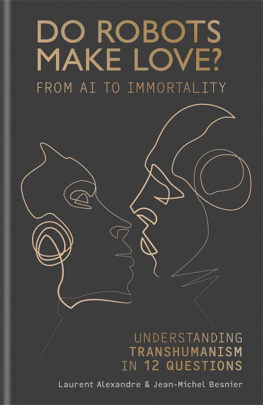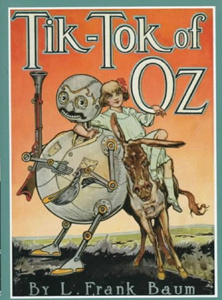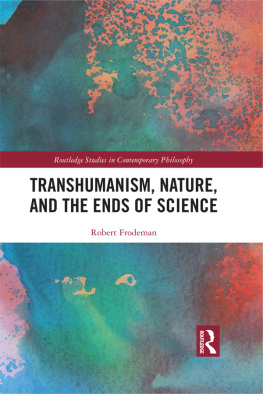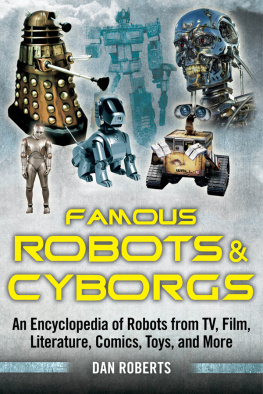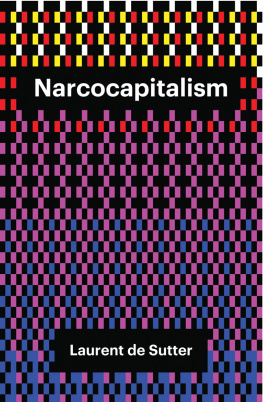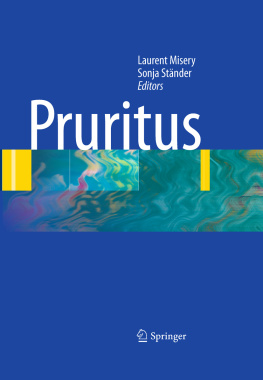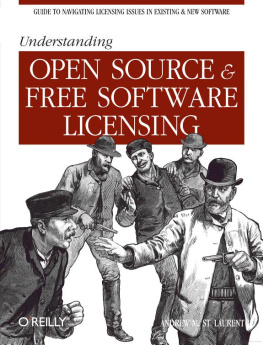Laurent Alexandre - Do Robots Make Love?: From AI to Immortality – Understanding Transhumanism in 12 Questions
Here you can read online Laurent Alexandre - Do Robots Make Love?: From AI to Immortality – Understanding Transhumanism in 12 Questions full text of the book (entire story) in english for free. Download pdf and epub, get meaning, cover and reviews about this ebook. year: 2018, publisher: Octopus, genre: Romance novel. Description of the work, (preface) as well as reviews are available. Best literature library LitArk.com created for fans of good reading and offers a wide selection of genres:
Romance novel
Science fiction
Adventure
Detective
Science
History
Home and family
Prose
Art
Politics
Computer
Non-fiction
Religion
Business
Children
Humor
Choose a favorite category and find really read worthwhile books. Enjoy immersion in the world of imagination, feel the emotions of the characters or learn something new for yourself, make an fascinating discovery.
- Book:Do Robots Make Love?: From AI to Immortality – Understanding Transhumanism in 12 Questions
- Author:
- Publisher:Octopus
- Genre:
- Year:2018
- Rating:4 / 5
- Favourites:Add to favourites
- Your mark:
- 80
- 1
- 2
- 3
- 4
- 5
Do Robots Make Love?: From AI to Immortality – Understanding Transhumanism in 12 Questions: summary, description and annotation
We offer to read an annotation, description, summary or preface (depends on what the author of the book "Do Robots Make Love?: From AI to Immortality – Understanding Transhumanism in 12 Questions" wrote himself). If you haven't found the necessary information about the book — write in the comments, we will try to find it.
Laurent Alexandre: author's other books
Who wrote Do Robots Make Love?: From AI to Immortality – Understanding Transhumanism in 12 Questions? Find out the surname, the name of the author of the book and a list of all author's works by series.
Do Robots Make Love?: From AI to Immortality – Understanding Transhumanism in 12 Questions — read online for free the complete book (whole text) full work
Below is the text of the book, divided by pages. System saving the place of the last page read, allows you to conveniently read the book "Do Robots Make Love?: From AI to Immortality – Understanding Transhumanism in 12 Questions" online for free, without having to search again every time where you left off. Put a bookmark, and you can go to the page where you finished reading at any time.
Font size:
Interval:
Bookmark:

Select one of the chapters from the and you will be taken straight to that chapter.
Look out for linked text (which is in blue) throughout the ebook that you can select to help you navigate between related sections.
The augmented human, synthetic biology, bionic prostheses, artificial intelligence: technological advances are mounting up at stupefying speed, and ideas that only a decade ago would have been the preserve of science fiction are now being actively researched in laboratories. Machines based on artificial intelligence are revealing the first glimpses of their extraordinary power; after the chess defeats inflicted upon Gary Kasparov by Deep Blue (designed by IBM in 1997), and Lee Sedols loss at the game of Go to AlphaGo (invented by Google in 2016), the fields in which human intelligence still outstrips that of machines are shrinking.
The economic upheaval to be anticipated from all this is considerable, and it is impossible to list all the professions that will be turned upside down by the new wave of automation. Unlike the steam engines that became ubiquitous in industry during the 19th century and the robots that did the same in the second half of the 20th, these new machines are not replacing human strength. Instead, they are taking over part of what was once thought to be unique to humankind: knowledge, judgment, analysis and even rational thought.
This prodigious acceleration of technology has been expedited by the convergence of four disciplines that had hitherto evolved separately: nanotechnology, which manipulates matter at the atomic level; biotechnology, which models life itself; information technology (in its most fundamental aspects in particular); and lastly, cognitive science, which is based on the functioning of the human brain. It is this explosion of NBIC (nanotechnology, biotechnology, information technology and cognitive science) that has made it possible to imagine the unparalleled, unprecedented, Promethean project examined in this book: modifying human beings improving them, augmenting them and surpassing them. For the highly influential transhumanists in Silicon Valley who are at the heart of the NBIC convergence revolution, this enhancement of the human species through technology represents the only chance for Homo sapiens to avoid being overtaken by the very machines they themselves invented. In fact, such man/machine hybrids have already made an appearance we need think only of the artificial heart developed by Carmat that has been implanted in several patients suffering from cardiac failure. However, this is a mere precursor to what will be possible in a few decades: editing human DNA to eliminate the sequences responsible for genetic illnesses, using 3D printers to manufacture organs, transcranial magnetic stimulation, linking brain function to devices with artificial intelligence, amplifying perceptive faculties like physical strength. And even, for some, the prospect of extending life expectancy indefinitely, to a point when the demise of death itself can be imagined.
While such expectations might have transhumanists afire with enthusiasm, they have become a source of worry for other schools of thought. What will be left of the free will of humans who are inextricably interlinked with their machines? Is living to the age of a thousand really desirable? How will augmented humans coexist with others? Should we not fear a kind of bio-totalitarianism, like the one described in Aldous Huxleys Brave New World? At that time (1932), it was pure science fiction, but todays unease is based on a realistic anticipation of our possible futures.
Having had the opportunity to debate these matters on many occasions, crossing intellectual swords and exchanging arguments, we cannot agree on answers to these questions.
Theres no getting around it our disagreements will remain deep-seated. However, during such debates, we have managed to establish that our positions converge on two points that may be even more fundamental: the importance of discussion that is reasoned, well argued and respectful of the other point of view, and the conviction that technology is neither good nor bad per se and that everything will depend on the use humanity chooses to make of it.
It was this discovery that prompted us to write this book as a dialogue, so the reader should not expect to find some ultimate reconciliation or a sudden ecumenical consensus. This book is a conflict, a robust debate, an adversarial dispute, much like those practised by the Greeks for the greater good of their democracy. Our wider hope is that our exchanges of opinions will similarly invigorate popular discussion of the enormous challenges that NBIC presents to our very humanity.
Laurent Alexandre and Jean-Michel Besnier
SHOULD THE HUMAN RACE BE IMPROVED?
Man is becoming the overseer of Creation, an inventor of phenomena; and in this respect, we shall never be able to circumscribe the power that he may acquire over Nature through future progress in the experimental sciences.
Claude Bernard, 1865
A technological revolution is under way as nanotechnology, biotechnology and artificial intelligence converge, making improvements to the performance of the human body and brain a real possibility. Technology can already create an augmented human and will be able to achieve more and more in the future. But should it take such a step?
Laurent Alexandre: The role of technology is to ensure good standards of living and to improve the conditions of human life. No one is against progress in medicine, which has led to ever-greater improvements in life expectancy, and such advances will continue. There are plenty of reasons for accepting the correction of biological weaknesses when technology permits. Take disorders affecting the retina, for example: the most common cause of sight loss in the developed world is age-related macular degeneration (AMD), which results in blindness as the centre of the retina gradually degrades. The number of people suffering from AMD in the entire world is projected to be 196 million by 2020 and 288 million by 2040 as the population ages. The condition already affects more than 600,000 people in the UK, over 1 million people in France and about 11 million Americans, and these figures are set to more than double by 2050. In addition to AMD there are several types of retinal pathology that also inexorably result in blindness for which there is no effective treatment. Progress in electronics (such as in biotechnology) will help us deal with AMD and other serious conditions more and more effectively. Why deprive ourselves of such techniques?
There are two branches of technology that hold some promise of treatments for age-related macular degeneration (AMD). The first of these involves placing electronic implants in the retina or directly in the cerebral cortex with a connection to a micro-camera; it is the logical next step after treatment for deafness with cochlear implants. This bionic eye currently provides the patient with only poor sight, but the constant progress being made in microprocessors and electronic image capture provides hope that implants with multiples of tens of thousands of pixels, bringing real comfort of vision, might be achieved before 2025. The second branch involves biological technologies such as stem cells and gene therapy. In April 2011, a Japanese team announced in the journal Nature that they had manufactured mouse retinas from embryonic stem cells grown in a test tube; the use of stem cells for disorders of the human retina should begin by around 2025. Gene therapy similarly offers hope for young patients affected by hereditary retinitis. The first gene therapy used on retinitis pigmentosa in dogs has achieved a normalization of retinal function beyond all expectations, and the transfer of such results to humans is already under way. Experimental gene therapy published at the start of 2012 enabled the partial restoration of vision in three patients affected by a form of Leber congenital amaurosis. This rare condition involves an incurable degeneration of the receptors in the retina, resulting in total blindness before the age of 30. LA
Font size:
Interval:
Bookmark:
Similar books «Do Robots Make Love?: From AI to Immortality – Understanding Transhumanism in 12 Questions»
Look at similar books to Do Robots Make Love?: From AI to Immortality – Understanding Transhumanism in 12 Questions. We have selected literature similar in name and meaning in the hope of providing readers with more options to find new, interesting, not yet read works.
Discussion, reviews of the book Do Robots Make Love?: From AI to Immortality – Understanding Transhumanism in 12 Questions and just readers' own opinions. Leave your comments, write what you think about the work, its meaning or the main characters. Specify what exactly you liked and what you didn't like, and why you think so.

